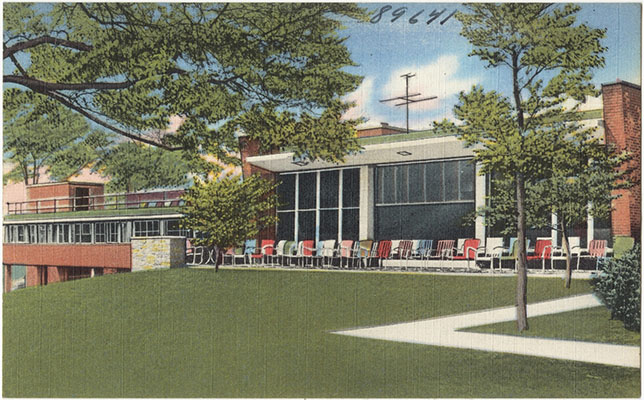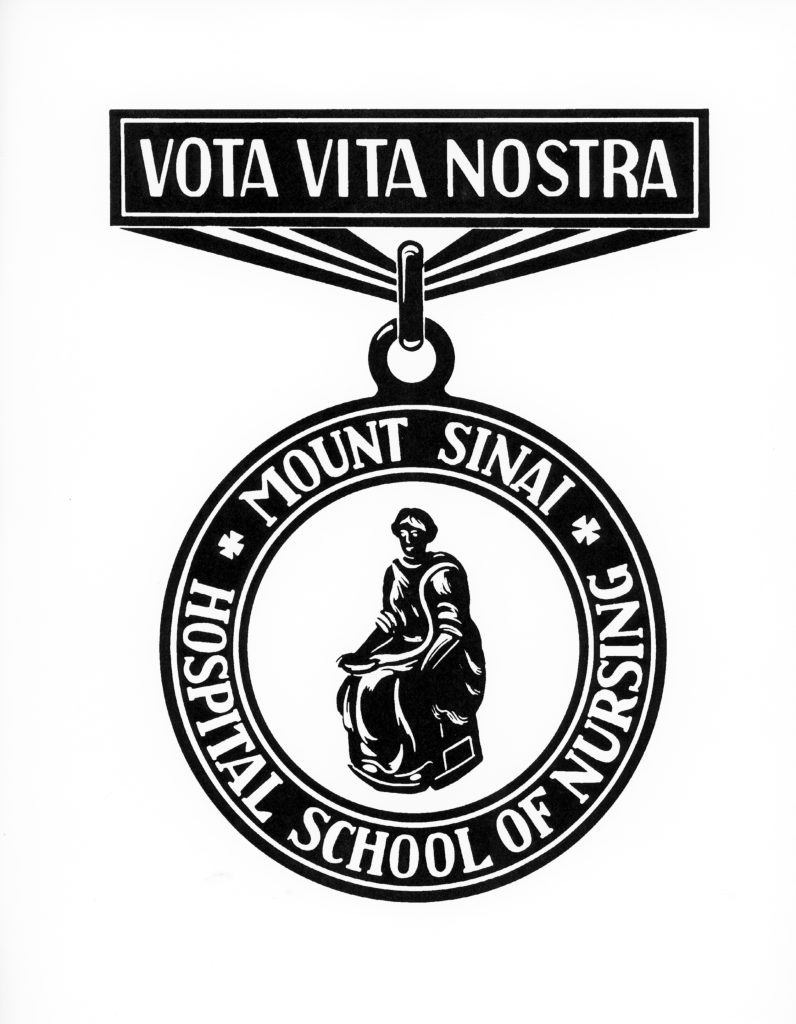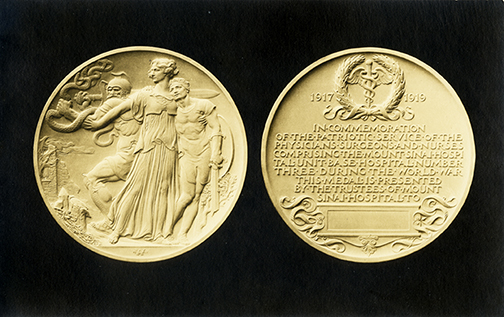Nov 10, 2021
The Neustadter Home was created by a provision in the 1905 will of Caroline Neustadter to serve as a convalescent center for women patients after leaving the hospital. It opened in July 1919 on the northeast corner of Central Park Avenue and McLean Avenue in Yonkers, on land once owned by Boss Tweed, leader of Tammany Hall. In 1936, an agreement was reached between The Mount Sinai Hospital and the Neustadter Home whereby Mount Sinai could send patients to the facility. Three years later, men began to be admitted as well.

The original Neustadter Home in the 1950s

The Moses Weinman wing, opened in 1949
As hospitals saw the increasing value in freeing up beds for more acute cases by discharging patients to rehabilitation hospitals, Neustadter needed to expand. The Moses Weinman wing was added in 1949, bringing the institution up to 69 beds from the previous 56. The facility also enhanced its medical care services. To reflect this evolution, the name was changed from the Neustadter Home to the Neustadter Convalescent Center in 1954. Over the years, the patient population was composed primarily of post-surgical cases. As the 1971 Mount Sinai Annual Report on convalescent care said: “So often before we have described the true function of Neustadter as a bridge that spans illness to complete recovery.” In 1969, Mount Sinai was given preferential use of the Center and eventually the Neustadter Board members and the medical staff were affiliated with Mount Sinai.
The Convalescent Center did not have a bright future, however. In a 1959 study of Neustadter, only 24% of patients could afford the full weekly charge of $84. Money was a perennial problem. Also, because the Home was twelve miles from Mount Sinai Hospital, it was hard to provide follow-up care by physicians. In 1972, the Neustadter Board dissolved and transferred their assets to The Mount Sinai Hospital. The next year, Mount Sinai sought to sell the Convalescent Center. The sale for $1 million to a local Hebrew high school was announced in 1973, but the school struggled to make the payments. The matter sputtered along for a few years, and in 1980 the property was finally sold to a realty company. In 1983, a shopping center opened on the site, including a large Waldbaum’s grocery store. The shops remain; the Waldbaum’s is gone. The Neustadter Convalescent Center has also totally disappeared.
For information on what archival material the Aufses Archives has relating to the Neustadter Convalescent Center, click here.
Sep 14, 2021
The Mount Sinai Hospital School of Nursing diploma program officially closed 50 years ago in 1971. At that point, it had existed for 90 years and had graduated 4,700 students, including the one and only  male student in the last class. (A complete history of the School is available here.) Many hospital diploma schools closed during the 1970s, including the St. Luke’s Hospital and the Roosevelt Hospital Schools of Nursing, both in 1974. This wave of closings was due to the schools being fiscal drains on the parent hospitals, as well as the changing educational standards professional nursing organizations championed, including the baccalaureate degree as the best entry-level credential for nurses.
male student in the last class. (A complete history of the School is available here.) Many hospital diploma schools closed during the 1970s, including the St. Luke’s Hospital and the Roosevelt Hospital Schools of Nursing, both in 1974. This wave of closings was due to the schools being fiscal drains on the parent hospitals, as well as the changing educational standards professional nursing organizations championed, including the baccalaureate degree as the best entry-level credential for nurses.
By the mid-1960s, the Mount Sinai Hospital School of Nursing was at a crossroads, trying to find a way to move forward in the face of these trends. In 1967, the newly formed Mount Sinai School of Medicine affiliated with The City University of New York (CUNY). This triggered a review of other possible interactions between the two institutions. That year, the School of Nursing joined with Hunter College, a part of CUNY, to start offering elective humanities credit to the students, easing their path to an eventual baccalaureate degree.
The next twist appeared in the Hospital’s Annual Report for 1968: “This has been a milestone year for the Department of Nursing. Negotiations with the City University led to the joint announcement of a baccalaureate program in nursing to be launched in September 1969 with the [Mount Sinai] Director of Nursing holding the position of Dean of the School of Nursing. Alumnae, staff and students have all expressed enthusiasm at the forward step. They are particularly pleased at the acceptance of the name, The Mount Sinai Hospital School of Nursing at The City College.”
 And so it was, but only briefly. The first class was admitted to the program in fall 1969, along with a sophomore group that had started at Sinai, and a graduation ceremony was held in 1972 for thirteen students. However, the two institutions could not work out long-term arrangements and so the relationship was terminated by 1974.
And so it was, but only briefly. The first class was admitted to the program in fall 1969, along with a sophomore group that had started at Sinai, and a graduation ceremony was held in 1972 for thirteen students. However, the two institutions could not work out long-term arrangements and so the relationship was terminated by 1974.
The closing of the School left behind a saddened but vibrant Alumnae Association that continues to serve its members and The Mount Sinai Hospital today.
Jun 1, 2021
We are pleased to announce that the new Archives Catalog is live. Access it here to search or browse our collection.

You can read more about it in our previous post or consult the FAQ page for more information. Happy researching!
May 10, 2021
The Aufses Archives is excited to announce its new online catalog. Based in AtoM, the catalog will make available records for all our archival material and provide direct access to our digital objects.

What does this mean for researchers?
Our new catalog has several new features:
- A more complete view of our holdings: This is the first time all of our material will be described together in one place, regardless of format and digitization status. All our publicly available material will have a record, whether or not it has been fully processed or has a complete finding aid. (An archival record is like a record for a book in a library catalog – you might not be able to download the whole book from the catalog, but you can see that they have it and how to access it.)
- Centralized digital resources: All our digital material will be in one place, regardless of its original format. Researchers will only have to search in one place for our digital material. This includes our web archives collection.
- Names, subjects, genres: Looking for something really specific? Search results can be filtered and faceted to include specific people, topics, and formats represented in the archival material.
- Improved searching: Material will be findable via keyword searching, within and across collections. Advanced search will be particularly helpful for those searching for material within a particular date range.

When can I use it?
The catalog will go live on June 1, 2021, with the majority of our archival records. Our digitized audiovisual and image collections will be added over the course of Summer 2021. Our born-digital and digitized records then will be incorporated starting in Fall 2021, with a project completion date in early 2022.
I need help using the new catalog — and I have feedback!
Contact us! We’re happy to help you find what you’re looking for.
Update: As of June 1, 2021, the Archives Catalog is live and available here.
Nov 24, 2020
Whenever you look back to the past, it is easy to find it all very strange, but a longer look allows us to see the threads that connect that time to this. Some of those threads are strong and enduring and others fray and end.
One of those strong threads that tie the Mount Sinai of 100 years ago to the Mount Sinai of 2020 is research and discovery. In 1920, Mount Sinai was dealing with the last wave of a deadly worldwide pandemic that had started in 1918 but still lingered. Some Mount Sinai physicians spent a great deal of time working on a “peculiar disease” that followed the epidemic. This was popularly called the ‘sleeping sickness,’ but doctors termed it epidemic encephalitis. Another Mount Sinai physician was lending his expertise as a member of a national commission that was established to deal with the ravages of empyema, which too often followed post-influenzal pneumonia. Other physicians were doing research on gastric diseases, leukemia, surgical innovations and cardiac problems – all topics that Sinai doctors continue to pursue.

Taken from 5th Ave. and 99th St. looking east over the new buildings. The building facing with the flag pole is the 1904 main building.
Another main theme from 100 years ago, as in every decade of Mount Sinai’s existence, was the physical changes being made on campus. The world war and epidemic had delayed the progress of the largest expansion plan ever envisioned by The Mount Sinai Hospital. First suggested in 1913, it was only in 1922 that all of the new buildings were completed and the renovations of older spaces finished. This resulted in a new Private Pavilion (our current Kravis Children’s Hospital), a new pediatric pavilion and pediatric clinic building, a larger employee dormitory, a larger laboratory building, and a new auditorium to accommodate Mount Sinai’s increasing educational efforts. The growth in the number of beds called for a larger house staff than before and allowed for the growth of new specialty services.
W hile these themes have echoes with our current year, as does the perennial nursing shortage of that era (among many others), there was much that was unique to Mount Sinai in 1920. In February of that year, Mount Sinai leaders held an event to celebrate the staff that had served in the World War I Mount Sinai affiliated unit, Base Hospital No. 3. Special commemorative medals were given to each veteran.
hile these themes have echoes with our current year, as does the perennial nursing shortage of that era (among many others), there was much that was unique to Mount Sinai in 1920. In February of that year, Mount Sinai leaders held an event to celebrate the staff that had served in the World War I Mount Sinai affiliated unit, Base Hospital No. 3. Special commemorative medals were given to each veteran.
The other topic of great interest in 1920 was the re-structuring of the medical staff to combine the in-patient and out-patient services under the in-patient chief of service. The Dispensary and the ward service had been two separate entities with limited overlap. The change allowed the clinic physicians to follow their patients when admitted to the hospital wards, and the ability to round and work with the in-patient staff made it more appealing to community physicians to take on clinic work. In the 1920 Annual Report, it was noted that the combined medical staff now numbered 250 physicians.
Certainly, times change. Institutions changes. Medicine changes. But even 100 years later, at Mount Sinai, some things never change.



 male student in the last class. (A complete history of the School is available
male student in the last class. (A complete history of the School is available  And so it was, but only briefly. The first class was admitted to the program in fall 1969, along with a sophomore group that had started at Sinai, and a graduation ceremony was held in 1972 for thirteen students. However, the two institutions could not work out long-term arrangements and so the relationship was terminated by 1974.
And so it was, but only briefly. The first class was admitted to the program in fall 1969, along with a sophomore group that had started at Sinai, and a graduation ceremony was held in 1972 for thirteen students. However, the two institutions could not work out long-term arrangements and so the relationship was terminated by 1974.



 hile these themes have echoes with our current year, as does the perennial nursing shortage of that era (among many others), there was much that was unique to Mount Sinai in 1920. In February of that year, Mount Sinai leaders held an event to celebrate the staff that had served in the World War I Mount Sinai affiliated unit, Base Hospital No. 3. Special commemorative medals were given to each veteran.
hile these themes have echoes with our current year, as does the perennial nursing shortage of that era (among many others), there was much that was unique to Mount Sinai in 1920. In February of that year, Mount Sinai leaders held an event to celebrate the staff that had served in the World War I Mount Sinai affiliated unit, Base Hospital No. 3. Special commemorative medals were given to each veteran.